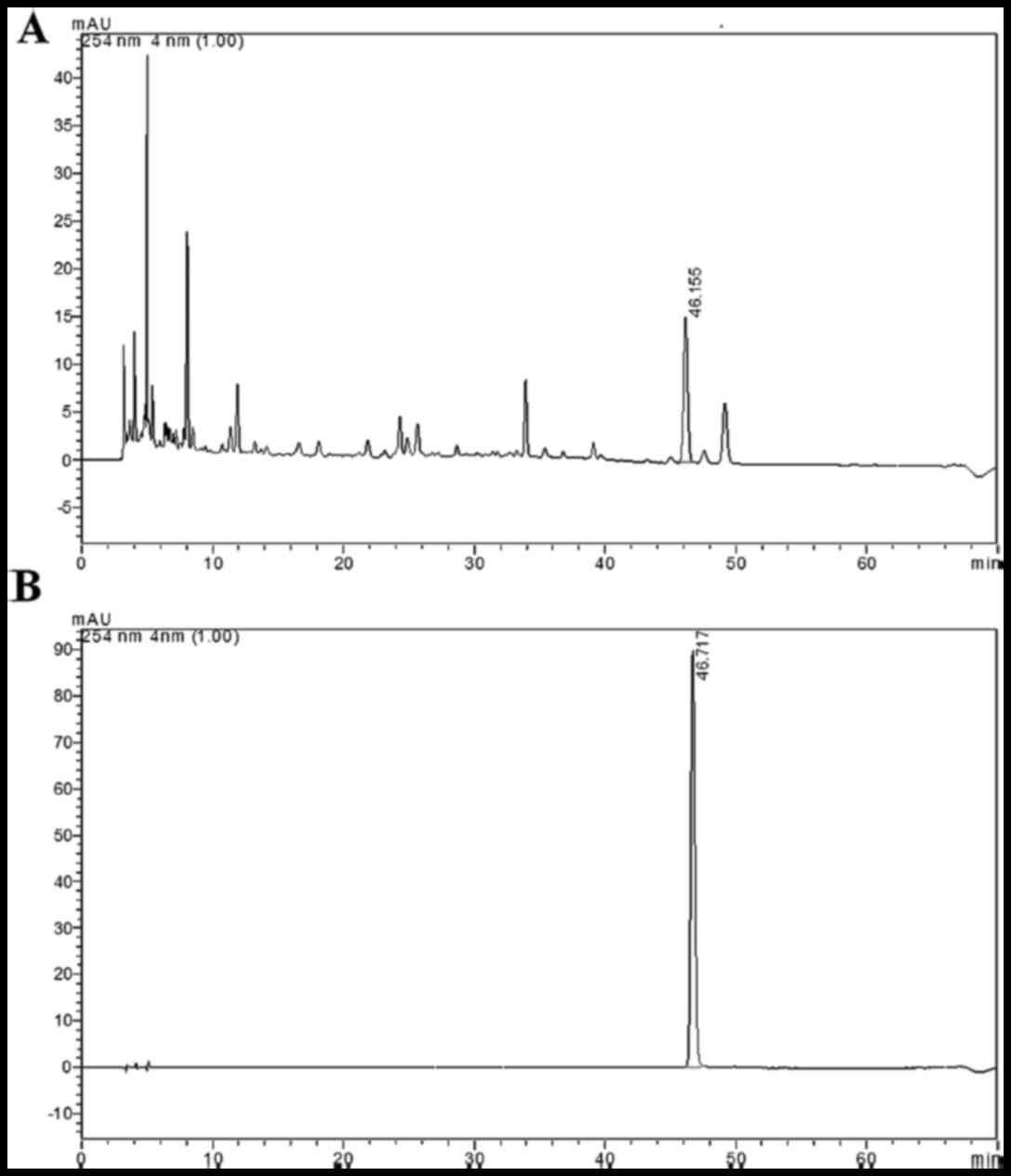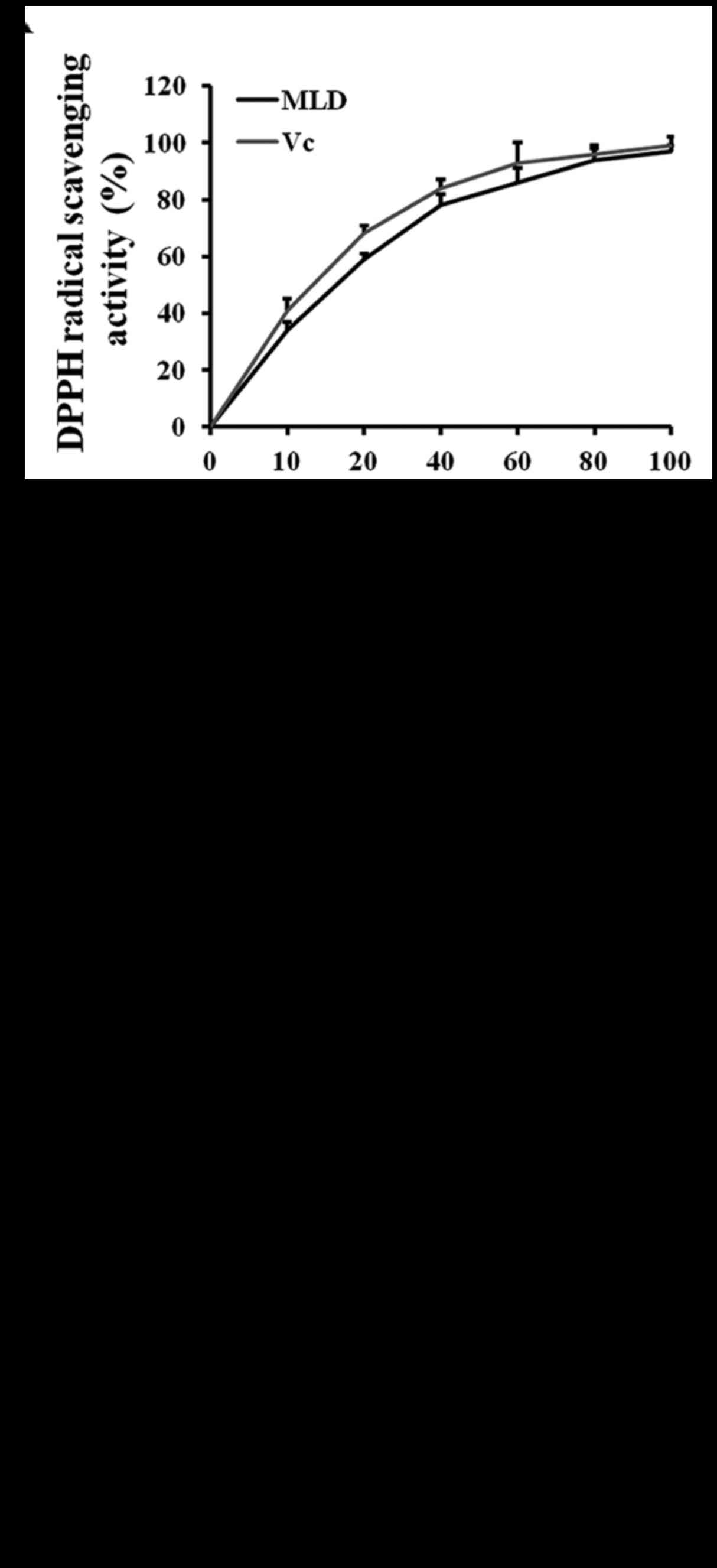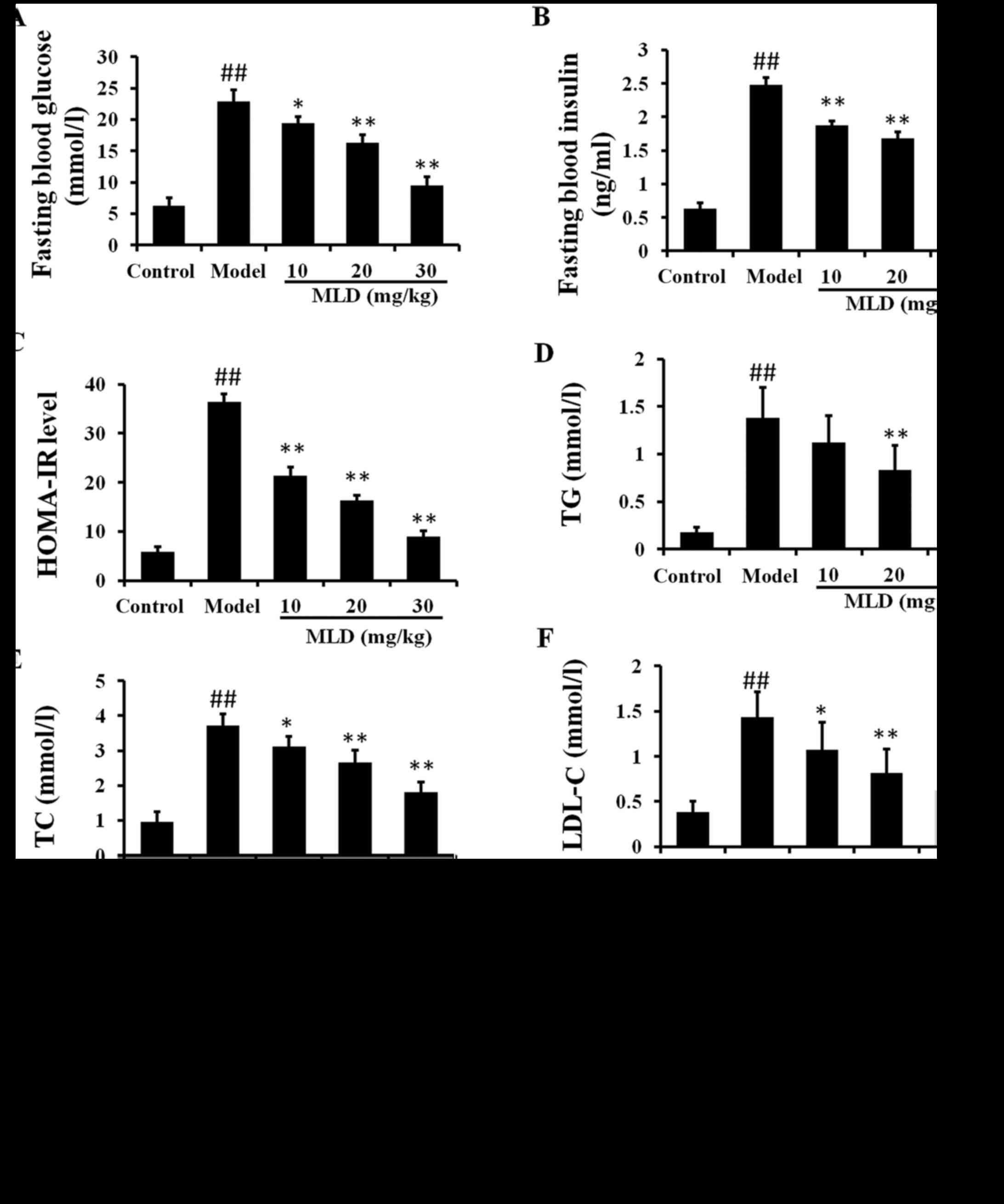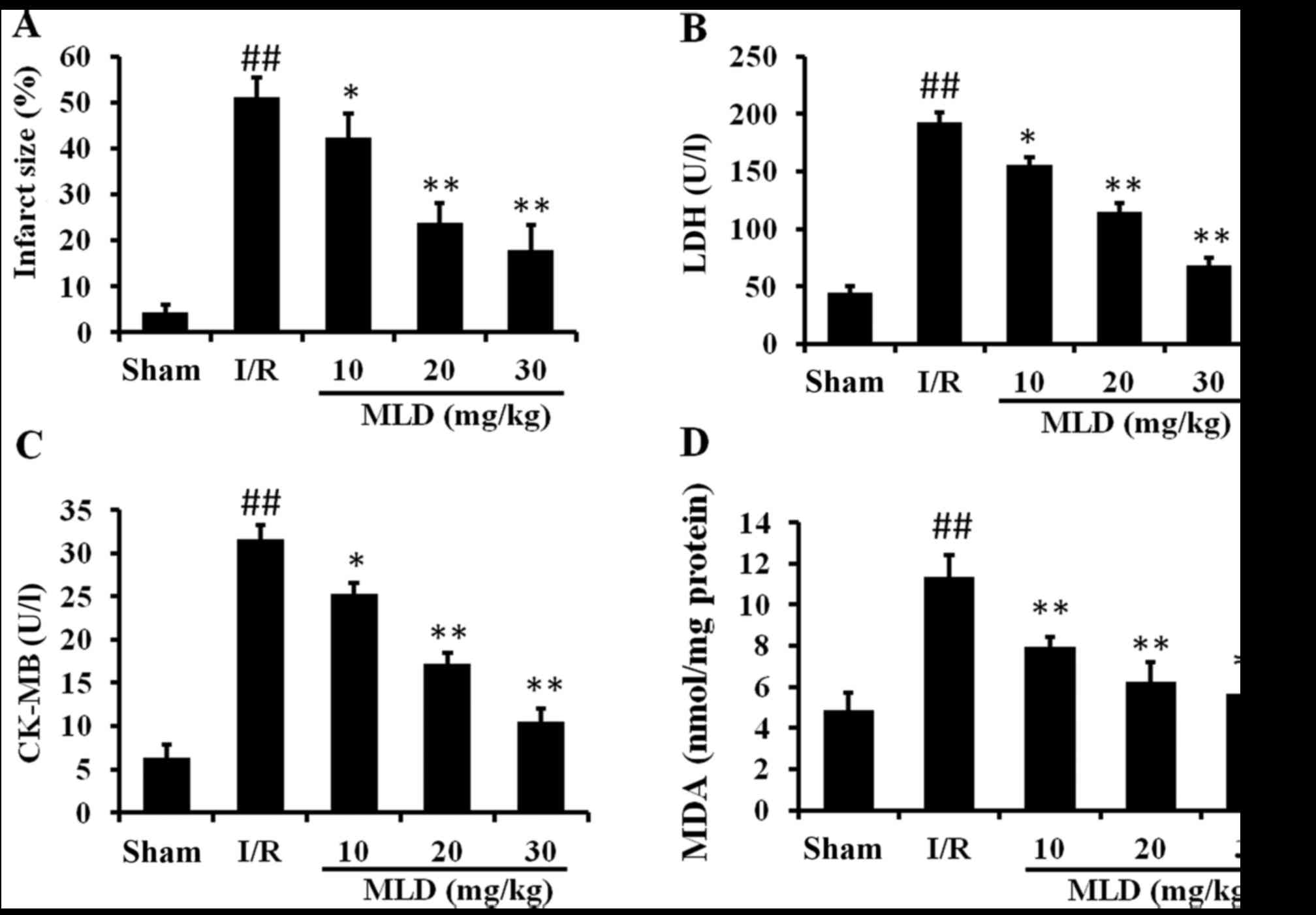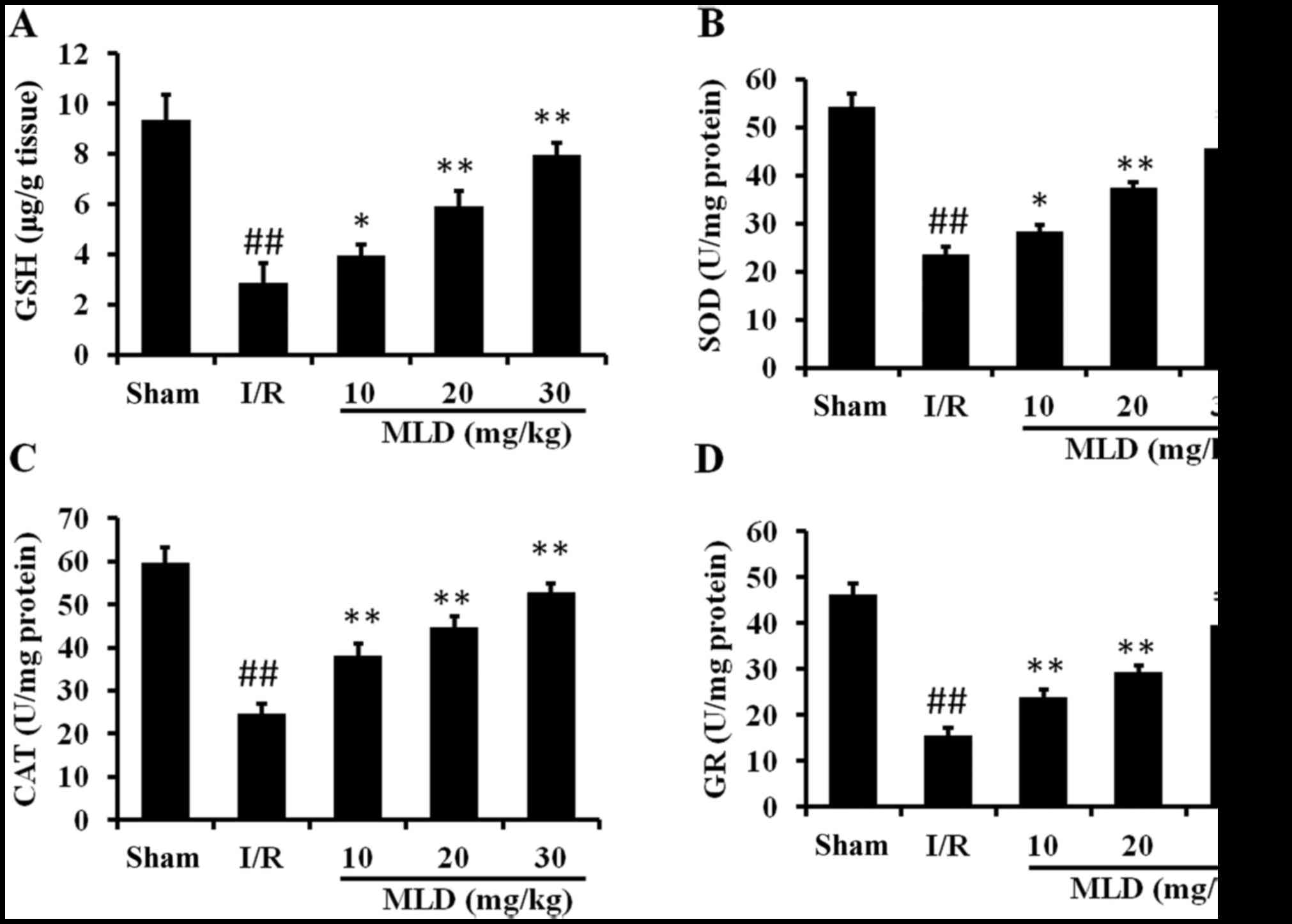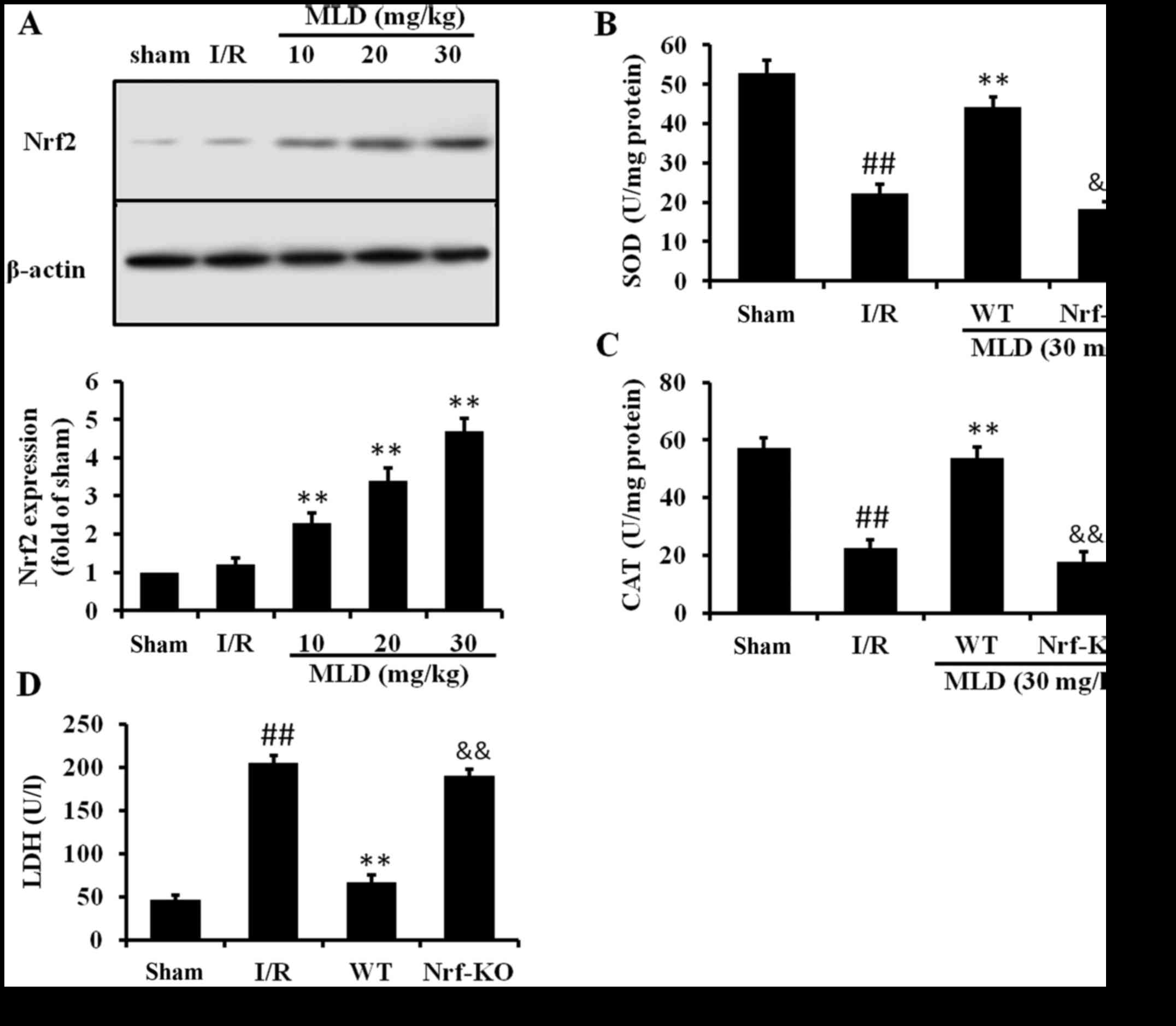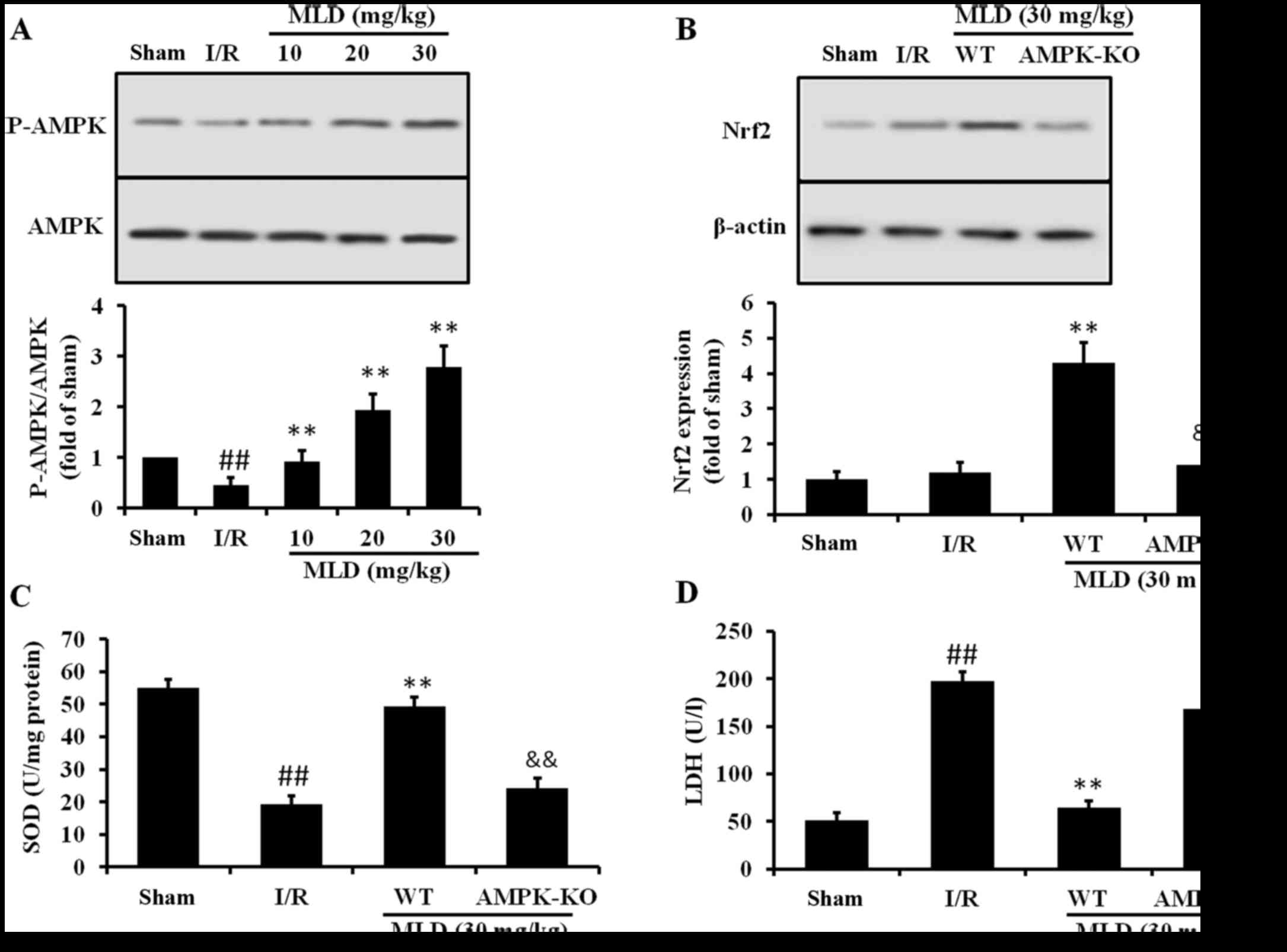|
1
|
Pappachan JM, Varughese GI, Sriraman R and
Arunagirinathan G: Diabetic cardiomyopathy: pathophysiology,
diagnostic evaluation and management. World J Diabetes. 4:177–189.
2013.PubMed/NCBI
|
|
2
|
Galderisi M: Diastolic dysfunction and
diabetic cardiomyopathy: evaluation by Doppler echocardiography. J
Am Coll Cardiol. 48:1548–1551. 2006. View Article : Google Scholar : PubMed/NCBI
|
|
3
|
Ayaz M, Ozdemir S, Ugur M, Vassort G and
Turan B: Effects of selenium on altered mechanical and electrical
cardiac activities of diabetic rat. Arch Biochem Biophys.
426:83–90. 2004. View Article : Google Scholar : PubMed/NCBI
|
|
4
|
Ceriello A: New insights on oxidative
stress and diabetic complications may lead to a 'causal'
antioxidant therapy. Diabetes Care. 26:1589–1596. 2003. View Article : Google Scholar : PubMed/NCBI
|
|
5
|
Vassort G and Turan B: Protective role of
antioxidants in diabetes-induced cardiac dysfunction. Cardiovasc
Toxicol. 10:73–86. 2010. View Article : Google Scholar : PubMed/NCBI
|
|
6
|
Cai L and Kang YJ: Oxidative stress and
diabetic cardiomyopathy: a brief review. Cardiovasc Toxicol.
1:181–193. 2001. View Article : Google Scholar
|
|
7
|
Nishikawa T, Edelstein D, Du XL, Yamagishi
S, Matsumura T, Kaneda Y, Yorek MA, Beebe D, Oates PJ, Hammes HP,
et al: Normalizing mitochondrial superoxide production blocks three
pathways of hyperglycaemic damage. Nature. 404:787–790. 2000.
View Article : Google Scholar : PubMed/NCBI
|
|
8
|
Inoguchi T, Li P, Umeda F, Yu HY, Kakimoto
M, Imamura M, Aoki T, Etoh T, Hashimoto T, Naruse M, et al: High
glucose level and free fatty acid stimulate reactive oxygen species
production through protein kinase C-dependent activation of NAD(P)H
oxidase in cultured vascular cells. Diabetes. 49:1939–1945. 2000.
View Article : Google Scholar : PubMed/NCBI
|
|
9
|
Cai L: Diabetic cardiomyopathy and its
prevention by metallothionein: experimental evidence, possible
mechanisms and clinical implications. Curr Med Chem. 14:2193–2203.
2007. View Article : Google Scholar : PubMed/NCBI
|
|
10
|
Arabshahi-D S, Vishalakshi Devi D and
Urooj A: Evaluation of antioxidant activity of some plant extracts
and their heat, pH and storage stability. Food Chem. 100:1100–1105.
2007. View Article : Google Scholar
|
|
11
|
Shibata Y, Kume N, Arai H, Hayashida K,
Inui-Hayashida A, Minami M, Mukai E, Toyohara M, Harauma A,
Murayama T, et al: Mulberry leaf aqueous fractions inhibit
TNF-alpha-induced nuclear factor kappaB (NF-kappaB) activation and
lectin-like oxidized LDL receptor-1 (LOX-1) expression in vascular
endothelial cells. Atherosclerosis. 193:20–27. 2007. View Article : Google Scholar
|
|
12
|
Du J, He ZD, Jiang RW, Ye WC, Xu HX and
But PP: Antiviral flavonoids from the root bark of Morus alba L.
Phytochemistry. 62:1235–1238. 2003. View Article : Google Scholar : PubMed/NCBI
|
|
13
|
Pan G and Lou C: Isolation of an
1-aminocyclopropane-1-carboxylate oxidase gene from mulberry (Morus
alba L.) and analysis of the function of this gene in plant
development and stresses response. J Plant Physiol. 165:1204–1213.
2008. View Article : Google Scholar
|
|
14
|
Sun F, Shen L and Ma Z: Screening for
ligands of human aromatase from mulberry (Mori alba L.) leaf by
using high-performance liquid chromatography/tandem mass
spectrometry. Food Chem. 126:1337–1343. 2011. View Article : Google Scholar
|
|
15
|
El-Beshbishy HA, Singab AN, Sinkkonen J
and Pihlaja K: Hypolipidemic and antioxidant effects of Morus alba
L. (Egyptian mulberry) root bark fractions supplementation in
cholesterol-fed rats. Life Sci. 78:2724–2733. 2006. View Article : Google Scholar
|
|
16
|
Enkhmaa B, Shiwaku K, Katsube T, Kitajima
K, Anuurad E, Yamasaki M and Yamane Y: Mulberry (Morus alba L.)
leaves and their major flavonol quercetin 3-(6-malonylglucoside)
attenuate atherosclerotic lesion development in LDL
receptor-deficient mice. J Nutr. 135:729–734. 2005.PubMed/NCBI
|
|
17
|
Gulcin I: Antioxidant properties of
resveratrol: a structure-activity insight. Innov Food Sci Emerg.
11:210–218. 2010. View Article : Google Scholar
|
|
18
|
Banu S, Greenway GM and Wheatley RA:
Luminol chemiluminescence inducedby immobilised xanthine oxidase.
Anal Chim Acta. 541:89–95. 2005. View Article : Google Scholar
|
|
19
|
Huang XL, Wang W and Zhou YW: Protective
effect of epimedium flavonoids injection on experimental myocardial
infarction rats. Zhongguo Zhong Xi Yi Jie He Za Zhi. 26:68–71.
2006.In Chinese. PubMed/NCBI
|
|
20
|
Trachanas K, Sideris S, Aggeli C,
Poulidakis E, Gatzoulis K, Tousoulis D and Kallikazaros I: Diabetic
cardiomyopathy: from pathophysiology to treatment. Hellenic J
Cardiol. 55:411–421. 2014.PubMed/NCBI
|
|
21
|
Aneja A, Tang WH, Bansilal S, Garcia MJ
and Farkouh ME: Diabetic cardiomyopathy: insights into
pathogenesis, diagnostic challenges, and therapeutic options. Am J
Med. 121:748–757. 2008. View Article : Google Scholar : PubMed/NCBI
|
|
22
|
Arrington CB, Dowse BR, Bleyl SB and
Bowles NE: Non-synonymous variants in pre-B cell leukemia homeobox
(PBX) genes are associated with congenital heart defects. Eur J Med
Genet. 55:235–237. 2012. View Article : Google Scholar : PubMed/NCBI
|
|
23
|
Ustinova EE, Barrett CJ, Sun SY and
Schultz HD: Oxidative stress impairs cardiac chemoreflexes in
diabetic rats. Am J Physiol Heart Circ Physiol. 279:H2176–H2187.
2000.PubMed/NCBI
|
|
24
|
Gao X, Ohlander M, Jeppsson N, Björk L and
Trajkovski V: Changes in antioxidant effects and their relationship
to phytonutrients in fruits of sea buckthorn (Hippophae rhamnoides
L.) during maturation. J Agric Food Chem. 48:1485–1490. 2000.
View Article : Google Scholar : PubMed/NCBI
|
|
25
|
Rains JL and Jain SK: Oxidative stress,
insulin signaling, and diabetes. Free Radic Biol Med. 50:567–575.
2011. View Article : Google Scholar
|
|
26
|
Itoh K, Wakabayashi N, Katoh Y, Ishii T,
Igarashi K, Engel JD and Yamamoto M: Keap1 represses nuclear
activation of antioxidant responsive elements by Nrf2 through
binding to the amino-terminal Neh2 domain. Genes Dev. 13:76–86.
1999. View Article : Google Scholar : PubMed/NCBI
|
|
27
|
Ma Q, Kinneer K, Bi Y, Chan JY and Kan YW:
Induction of murine NAD(P)H:quinone oxidoreductase by
2,3,7,8-tetrachlorodibenzo-p-dioxin requires the CNC (cap 'n'
collar) basic leucine zipper transcription factor Nrf2 (nuclear
factor erythroid 2-related factor 2): cross-interaction between AhR
(aryl hydrocarbon receptor) and Nrf2 signal transduction. Biochem
J. 377:205–213. 2004. View Article : Google Scholar
|
|
28
|
He X, Chen MG, Lin GX and Ma Q: Arsenic
induces NAD(P)H quinone oxidoreductase I by disrupting the
Nrf2•Keap1•Cul3 complex and recruiting Nrf2•Maf to the antioxidant
response element enhancer. J Biol Chem. 281:23620–23631. 2006.
View Article : Google Scholar : PubMed/NCBI
|
|
29
|
Hardie DG: AMP-activated protein kinase:
an energy sensor that regulates all aspects of cell function. Genes
Dev. 25:1895–1908. 2011. View Article : Google Scholar : PubMed/NCBI
|
|
30
|
Sriwijitkamol A, Ivy JL, Christ-Roberts C,
DeFronzo RA, Mandarino LJ and Musi N: LKB1-AMPK signaling in muscle
from obese insulin-resistant Zucker rats and effects of training.
Am J Physiol Endocrinol Metab. 290:E925–E932. 2006. View Article : Google Scholar
|















